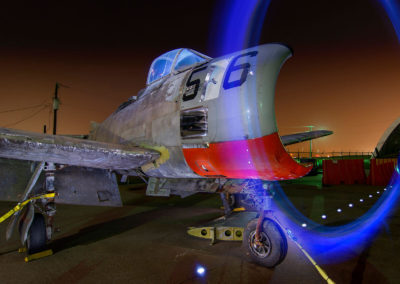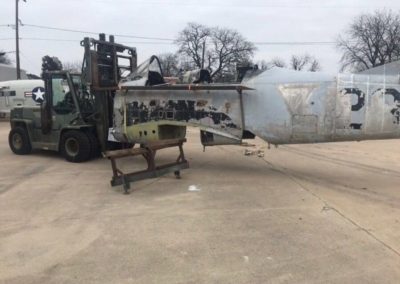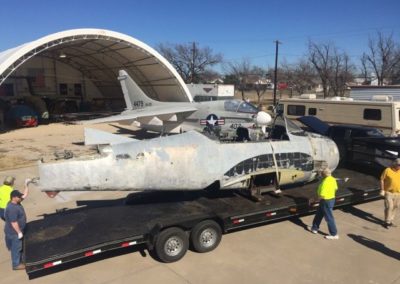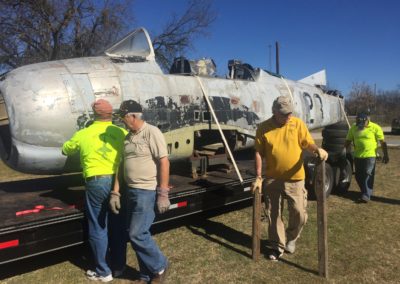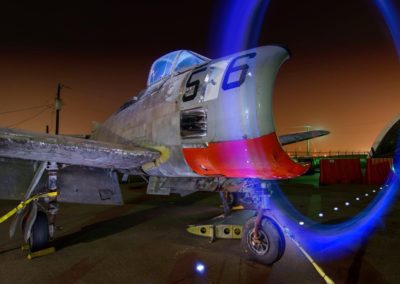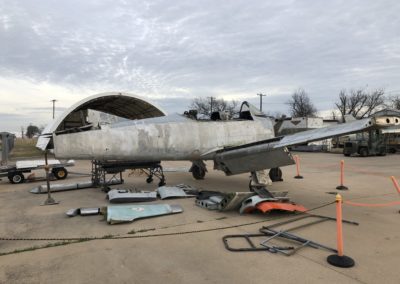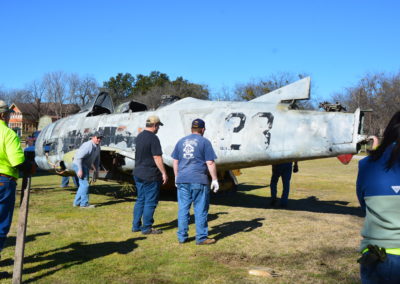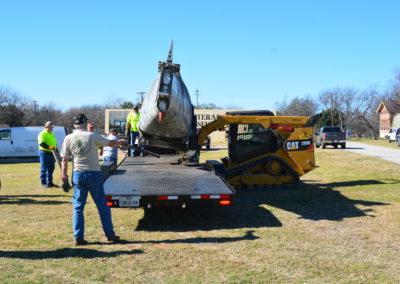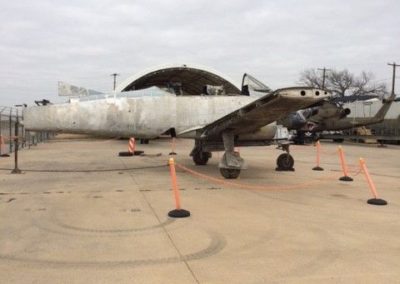T-28 Trojan
The North American Aviation T-28 Trojan is a radial-engined military trainer aircraft used by the United States Air Force and the United States Navy beginning in the 1950s.
Warbird Overview
The North American Aviation T-28 Trojan is a radial-engined military trainer aircraft used by the United States Air Force and the United States Navy beginning in the 1950s. Besides its use as a trainer, the T-28 was successfully used as a counter-insurgency aircraft, primarily during the Vietnam War. It was employed by 26 countries.
ABOUT THE T-28 TROJAN
The North American Aviation T-28 Trojan is a radial-engined military trainer aircraft used by the United States Air Force and the United States Navy beginning in the 1950s. Besides its use as a trainer, the T-28 was successfully used as a counter-insurgency aircraft, primarily during the Vietnam War. It was employed by 26 countries.
Fact #1
This Trojan originally belonged to the US Air Force.
Fact #2
The T-28 was sold to the Mexican Air Force where it served in Squadron 201, the Aztec Eagles.
Fact #3
Squadron 201 is the same squadron of WWII fame that trained here in North Texas before flying combat missions in the Philippines in P-47s.
General characteristics
Crew: 2
Length: 33 ft 0 in
Wingspan: 40 ft 1 in
Height: 12 ft 8 in
Empty weight: 6,424 lb
Max takeoff weight: 8,500 pounds
Powerplant: 1 × Wright R-1820-86 Cyclone 9-cylinder air-cooled radial engine, 1,425 hp
Performance
Maximum speed: 343 mph
Ferry range: 1,060 miles
Service ceiling: 35,500 ft
Rate of climb: 3,540 ft/min
Armament
Hardpoints: 6 with a capacity of 1,200 pounds
This T-28A (Air Force serial number 51-7582, North American serial numbers 174-435) was first assigned to the 3580th Pilot Training Group at Foster AFB in Victoria, TX. It was involved in a small accident on 12 December 1953 due to structural failure. Following repairs, it was assigned to 3307th Pilot Training Group, Marana AFB, AZ, on 25 April 1956. It was assigned to the 3302nd Pilot Training Squadron at Spence AFB, Georgia, on 9 July 1957. It was retired following its time in Georgia and sent to the Arizona Aircraft Storage Branch, Davis-Monthan AFB, AZ, on 14 December 1957 and removed from the Air Force inventory on 21 August 1958. Its flying days were not over. The aircraft was assigned to the Military Assistance Program and sold to the Mexican Air Force (Fuerza Aérea Mexicana) on 21 August 1958 as T28-928. It spent many years in Mexico who used almost 90 T-28s over the years. One exciting episode occurred while this aircraft served Mexico:
On December 31, 1958, two P-51D Mustangs of the Guatemalan Air Force attacked a few Mexican fishing boats that were twelve miles off of the Mexican coast. The Mexican planned to respond with an attack on La Aurora Air Base near Guatemala City, Guatemala, which housed the Mustangs and other military aircraft. The Mexican attack squadron would use three surviving P-47D Thunderbolts for air superiority, T-28 Trojans, and AT-6 Texans for attack missions, along with a C-47 Dakota which served as the airborne command. The P-47s, AT-6s, and T-28s were loaded with machine guns, rockets, and napalm bombs. They took off from Tuxtla on December 31, 1958, for the attack mission. Once they crossed into Guatemalan airspace, the strike force dropped to eighty-feet altitude to avoid being spotted by Guatemalan Air Force radar systems. The Mexican Air Force strike force was very close and was about to attack the base, but before they could, a message came in from the C-47 via FAM officials to abort the mission.
This T-29 was returned to the US in 1988 and registered as a civilian aircraft (N8156L) in April 1989. It did indeed have its last flight around this time. It was acquired at auction by David Ozee who loaned it to the now-defunct US Veterans Museum in Granbury (and later Glen Rose), Texas. This aircraft is on loan to Fort Worth Aviation Museum by David Ozee.
Good shape and will need a good wash and brush down.
Note: Scheduling is always a moving target depending on weather and workload. All schedules are subject to changes.
Become a Member!
FLIGHT SIMULATOR
HOURS
Saturday: 9AM-2PM
Sunday: 11AM-3PM
